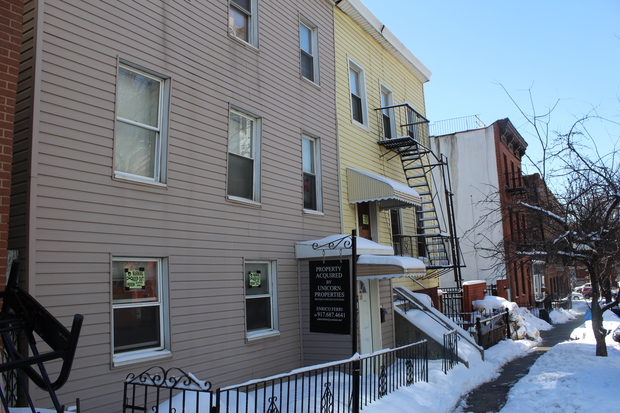BY LESLIE ALBRECHT/DNAinfo New York
BROOKLYN, New York City — The site of an old Brooklyn pool hall where a young Al Capone hung out and learned to play pool — and where his father collapsed from a heart attack — is being turned into condos.
Developer Farhad Bokhour said he knew of the Capone connection and joked that "Al Capone Condos" could be a fitting name for the development.
“Do you think we could get more money by connecting Al Capone to the project?” Bokhour asked with a laugh. "Maybe people can play pool with his ghost."
Bokhour plans to build a four-story, eight-unit apartment building with a penthouse on Brooklyn's Garfield Place between Fourth and Fifth avenues in Brooklyn. The project will demolish buildings at 18 Garfield Place and 20 Garfield Place, which was once the poolroom frequented by Capone, according to biographies of the Prohibition era's "Public Enemy No. 1."
Though he made his name in Chicago, Capone was born in Brooklyn in 1899 and spent his formative years in Gowanus, a neighborhood in Brooklyn. His family was among the waves of Italian immigrants who came to America to make a better life, said biographer Laurence Bergreen, author of "Capone: The Man and the Era."
The poolroom at 20 Garfield Place was a haunt of Capone's because his family lived across the street, at 21 Garfield Place. The Capones also lived at 46 Garfield Place, and, as a family of eight, they crammed into the second floor of a "cold-water tenement" at 38 Garfield, according to "Capone: The Life and World of Al Capone" by John Kobler.
 The pool hall where Al Capone learned to play.
The pool hall where Al Capone learned to play.
Though the future gangster ran with street gangs such as the South Brooklyn Rippers and Five Points Juniors, his evolution into Scarface wasn't inevitable, Bergreen said.
“He was not a boy criminal or part of a crime dynasty or anything like it,” Bergreen said. “His family was honest and hardworking. It wasn’t like a 'Godfather' movie where you’re born into this tradition.”
Capone went to school at nearby P.S. 133, at Fourth Avenue and Butler Street, and earned B's until sixth grade, when his academic performance and attendance plummeted so much that he was forced to repeat the grade. After a teacher hit him — corporal punishment was then a common occurrence at P.S. 133, Bergreen wrote — Capone fought back and landed in the principal's office.
The principal beat him too.
"Afterward, the boy vowed never to return to P.S. 133, and he never did,” according to Bergreen’s book.
Capone's father, Gabriele, played pool at the 20 Garfield Place club, and taught young Alphonse the game. Al eventually became a "neighborhood champion," Kobler wrote. The spot later played a pivotal role in young Capone's life. In 1920, Gabriele Capone collapsed in the poolroom after suffering a heart attack. He was carried to 38 Garfield, where he died. The loss may have helped propel Capone on the road to crime, Bergreen wrote.
 The Capone family lived at several spots on Garfield Place, including 38 Garfield Place.
The Capone family lived at several spots on Garfield Place, including 38 Garfield Place.
Capone had so many connections to Garfield Place that an urban myth persisted for years about the gangster stashing some of his riches inside the walls of one of his homes on the block, Bergreen said.
“People were going back there to try to find it,” Bergreen said. “I got asked about it several times. [But] Capone lived there when he was a kid, before he had any riches.”
If it turns out Capone hid any ill-gotten gains inside his old poolroom, Bokhour isn't hopeful about finding the hidden treasure.
“If anybody is going to find anything, it’s going to be the demolition people, and they probably wouldn’t give it to us,” Bokhour said.
For more neighborhood news, listen to DNAinfo Radio here:

















